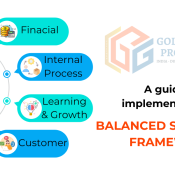
Building a people-centred strategy.
Dr P V Siddharth – CEO & Founder – of Golden Gate Properties – covered the main issues about this subject:
What does a people-centred strategy look like?
Why do you need one?
How much is it worth?
What does a people-centred strategy look like?
But first, let’s take a step back and ask ourselves the difference between a people-centred strategy and an employee value proposition.
Typically, these two merge, and understanding their differences is fundamental to successfully design a people strategy.
An employee value proposition is a mutually supportive handshake between the employer and the employee. While the people strategy is around how you organize your system and your approach to unlock human performance to support your business strategy.
The successful implementation of a human resources management strategy is intrinsically linked to your business strategy and ensures both employee engagement and commercial success. is the element upon which HR value is to be judged.
Why would you want a People Strategy
Your organization may already be doing some strategic people choices from time to time, mainly around leadership, diversity, inclusion, or resourcing. But these isolated choices do not build a well-crafted people strategy. To develop your people strategy, you need to modify the approach to ensure your people strategy is linked to your purpose and business strategy.
Dr P V Siddharth recommends two things to consider for this change of focus:
How does your business strategy impact employees?
What are the underlying drivers within the macroeconomic context?
If your business strategy is changing, this will certainly affect your personnel strategy. Keep in mind the new trends, changes in business models and new skills that will be needed to achieve this business strategy.
Also, be mindful of the macro environment. We know the macro environment at work is changing. What people want and expect from their employees also changes, and you have to deal with that.

Where’s the value of having a People Strategy?
Your HR strategy will only add value – and be successful – if it is linked to your business strategy.
To ensure this, step back and think about what your business strategy looks like.
Start by responding to the following questions about your business strategy:
What are your company’s vision and beliefs?
What are your Business Strategy’s focus areas and pillars?
What are your goals and objectives?
What role do you want to play regarding market or cultural changes?
What value do you want to generate for your key stakeholders, customers, and society?
You can add as many questions as you feel necessary to clearly understand the direction your Business Strategy has and determine how your People Strategy will help achieve those goals.

The real value: holistic people choices that focus on execution
Now that you clearly understand how your Business Strategy and your People Strategy will be connected, you need to define your holistic people choices. These will be the critical enablers for your People Strategy.
Dr P V Siddharth suggests picking five themes that will provide the frame and options to differentiate across the different businesses.
In the case of GGP, they’ve identified five holistic people choices:
- Mindset & Behaviours
- Leadership
- Talent
- Capabilities & Skills
- Drive Performance
As Dr P V Siddharth explains, each of these is connected to GGP’s Business Strategy’s needs. These choices may not seem very different from what we’d see in other companies. And that’s true because the real value of any strategy doesn’t lie in an intellectual model but in the execution.
None of these themes is new or necessarily unique to GGP. However, the philosophy, the framework, the approach, how they’ve interwoven it, and how they go about execution are the key differentiators.
You can get more granular and determine a set of pillars or focus areas for each of these choices. For example, for “Mindset & Behaviours,” GGP determines five areas that will have the biggest impact on their business:
- Grow trust in us
- Maximize our performance
- Live our values and goal zero
- Engage and inspire
- Learner mindset
But how do you connect these choices (and sub-choices) to the actual execution of the strategy?
Let’s look at an example.
One of GGP’s sub-areas for Mindset & Behaviours is “Grow trust in us.” This value, in its execution, is fundamentally about how GGP is transitioning from an asset and supply-led organization to a more customer- and demand-driven one. And because of this, the ability to think back from the customer, to move from inside-out to outside-in thinking, becomes increasingly important.
So, this is the moment to define the holistic people choices that will be at the centre of your People Strategy and will act as critical enablers to achieve your Business Strategy goals. After you have determined these high-level choices, get more specific: what areas will you need to focus on for each of these? And, most importantly, how will you connect them to your Business Strategy execution?
Tips for building a successful People Strategy
#1 Building on strengths of heritage
Provide clarity on what binds you, what makes you who you are, and where you’re going. The successful cultural change recognizes where you’ve come from, what makes you unique, as well as the transitions you need to be successful in the future.
#2 Tailor to: unlock integrated value
In large organizations, a one size fits all approach just won’t cut it and it won’t unlock human performance. So, tailor to unlock your integrated value. Choose and sequence what you want to deploy in each business, including which elements you want to dial up or down. Differentiate on business unit performance, but not the expense of the integrated value.
#3 Focus on Execution
The value of any strategy isn’t in an intellectual model. In some respects, there’s nothing new under the sun, but the value is in the execution:
Define the minimum standards.
Use the frameworks and solutions you’ve got in place.
Be persistent with minimal changes to the language.
#4 Replacing: all current models
Make sure you don’t attempt to market the engineering of the solution. It’ll only add complexity to your process. Focus on the key messages you want to convey to your organization and ensure they are simple. Use simple, persistent language and avoid adding new concepts.
#5 Ready for all future bookends
And finally, be ready for all future scenarios. No strategy survives the first action with the enemy. Be ready to pivot and update.



